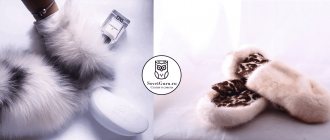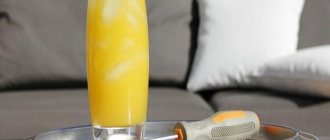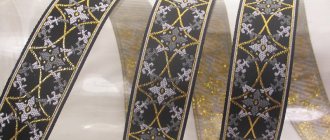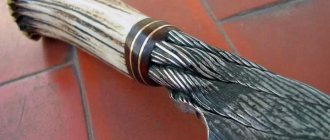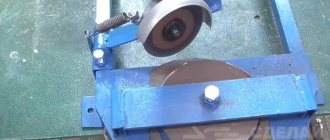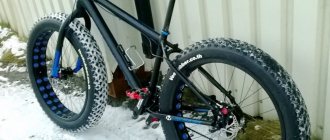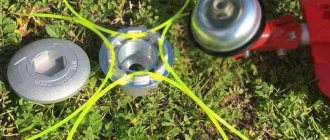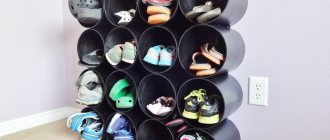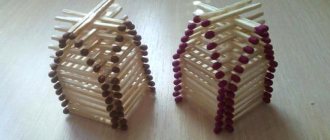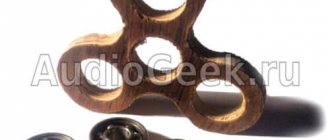Decorative plaster fur coat could belong to the finishing materials from the “well forgotten old” series, if it were not so popular today. Indeed, such a rough surface for walls was invented several decades ago and is found in Russian cities at almost every turn.
However, modern decorative plaster fur coat, although performed using the same technology, looks different. They began to paint it in a variety of colors - this very economical coating was transformed beyond recognition. You can prepare plaster under a fur coat with your own hands.
If previously facade plaster fur coat served purely utilitarian purposes - to protect buildings from atmospheric factors, now it can rightfully take its rightful place among decorative finishing materials.
Advantages and disadvantages.
According to professionals, shuba plaster is even superior to its colleagues in many respects. This type of coating is different:
- high levels of soundproofing and noise insulation characteristics; this happens not only due to its composition, but also due to the possibility of applying it in the thickest possible layer without significant financial costs; after all, unlike, for example, Venetian plaster, a fur coat costs almost a penny - there is no point in saving the solution, so you can create the thickness that you want, so that, of course, it sticks to the surface;
- ease of application: even a person inexperienced in finishing can do this, which cannot be said, for example, about mosaic or Venetian - they require knowledge of the technology and training;
- different options for applying to walls: four methods are used - with a roller, a trowel with a spatula, through a mesh, using a broom or brush; machine application is also possible;
- good aesthetic characteristics, which are quite comparable with another, more expensive, type of coating - bark beetle plaster, as well as other decorative finishing materials;
- the ability to paint the finished surface with any color: you can add dye to the solution or apply it to an already dried coating;
- good maintainability: the fur coat is very easy to restore;
- very low price of the material compared to other types of mixtures.
Decorative façade plaster has the disadvantage of being able to quickly collect dust. Therefore, a wall finished with it must be washed with a powerful jet of water every few years. However, this is perhaps the only significant disadvantage of this type of coating.
Components.
Basically, façade plaster coats are prepared independently - it’s very simple. After all, the solution is made from ordinary cement and sand. Nowadays, fine sand is increasingly used: with it, the coating turns out to be more finely structured. You can use gypsum instead of cement, but then you need to be prepared that the coating will absorb moisture very quickly. It will have to be protected with special paints or compounds.
One of the recipes for preparing fur coat plaster with your own hands assumes the following ratio of components: one part cement and three parts sand. Another option suggests taking sand and cement in half, the third option is 1:2. Do-it-yourself fur coat plaster is diluted with water, which is added until the solution acquires a consistency that resembles liquid sour cream.
Solutions for mechanized plastering
It is most convenient to use mixtures that are designed specifically to do this job. Indoors, they often resort to cement bases and gypsum.
The exception is objects where humidity is always high. For facade finishing, it is recommended to give preference exclusively to the cement component.
Among the materials suitable for use in such situations are cement and sand mortars. But when preparing it, you need to maintain consistency and proportion.
But it is the use of specialized mixtures that will allow you to obtain a high-quality coating. Plasticizers and other substances are added to the solutions, which improve the texture of the wall and make all the work easier. Just like creating a plastering machine with your own hands, the drawings will confirm this.
Special purpose mixtures provide the following benefits to owners:
- Improving the sound and heat insulation properties of walls. If the composition contains a special component like perlite.
- Creating a favorable climate, because the compositions are vapor permeable.
- Easier achievement of the effect of a perfectly flat surface. This applies even to curved sections and corners.
- High-quality connection to the walls.
- Now drying does not take so much time.
It is easy to find compounds on the market that are designed specifically for machine plastering. But most manufacturers prefer to supply compounds with universal functions. They are plastered both manually and mechanically.
Factory product.
Ready-made mixtures - in dry form or already suitable for starting work, have different compositions and characteristics. Thus, under the Cerezit brand, pebble-type plaster is offered, with which you can create a “fur coat” effect. In addition to cement, it contains small stone granules. It tolerates mechanical and atmospheric influences well. To make a “fur coat” out of it, experts recommend using a short-haired roller.
“REAL” brand plaster is proposed to be used for finishing concrete walls. They can be used to create a decorative coating when arranging a thermal insulation system for walls.
ATLAS CERMIT SN (CERMITE SN) has mineral inclusions measuring one and a half or two millimeters. Allows you to create a decorative “fur coat” type coating.
Another decorative option is “Lakra Shuba”, packaged in 15 kilograms ready for use. Its composition contains minerals and acrylic. The ready-made mixture “Aura Putz Fur Coat” can be used for finishing concrete walls, brick, stone, plywood, plasterboard, chipboard.
Prime well.
Prepare the base for plastering work as usual before application. The wall is thoroughly cleaned of everything foreign, including old finishing materials.
Expert advice: On a smooth surface you need to make notches using a hammer and chisel. This is necessary to ensure good adhesion to the base.
Be sure to prime the base. The composition for this can be purchased at a building and finishing materials store. A large brush is suitable for application. It is important to wet the wall very well. You can do this using a spray bottle. Then you need to wait until the primer is completely dry.
A roller will help.
Decorative plaster coat can be applied to the surface in different ways. There are four of them in total, each with its own characteristics and preferences when choosing a place of application.
The first, simplest option is decorative facade plaster coat for application with a roller wrapped in fur. In order for everything to work out as it should, it is important to monitor the thickness of the solution - it should not be liquid, but not thick. You can proceed as follows: first apply the mixture to the surface with a spatula, then roll it out with a roller. Or simply dip the roller in the solution and “paint.” In the second case, the structure of the finished coating will be rougher. Usually, when the mixture dries, the surface is smoothed a little using a dampened trowel. The result is a cork effect.
You can vary the surface structure. So, a roller with a longer pile will give a larger texture. A roller with holes will create a unique design. When applied with a roller, decorative fur coat plaster can be applied in two layers. Apply one first, level it out, then roll over the wet mixture. Then, when the solution has set, walk the more liquid mixture over the surface. This will help you get a different texture.
About cars made with your own hands
How to make a plastering machine yourself
Of course, in mass production it is easy to find high-quality and practical, powerful tools.
But the price will be the main disadvantage for many.
When performing a one-time job, not everyone will decide to purchase expensive equipment.
And rent is not always available to buyers.
But even in such situations there is a way out - homemade plastering machines.
They will be inferior to serial models in power and performance, but have an acceptable cost.
And working with such a tool will not cause much trouble.
- As a basis for creating a tool such as a do-it-yourself plastering machine, we take an ordinary fire extinguisher with a capacity of up to 4 liters. It has most of the parts we need. These include pens and cylinders where solutions are placed. And a lever that opens the valve at the outlet.
- If the volume is larger, the product will become too bulky. And a small container will need to be refilled too often.
It all starts with cutting off the bottom of the fire extinguisher. A homemade machine works the same way as a spray gun. In this case, the fire extinguisher capacity plays the role of a solution hopper; its bottom should be at the top.
Next, the hole is drilled. It is located opposite the valve outlet. A metal tube is placed inside.
And then at its end a nozzle with a diameter of 4-5 millimeters is installed. Air is supplied through it, which is taken from the compressor.
The power of the device is determined by several factors:
- The gap between the parts of the incoming nozzle, as well as the nozzle
- What diameter is the outlet hole provided?
- Air pressure
The mixture is ejected more actively as the outlet nozzle approaches the nozzle.
15-20 millimeters from the nozzle to the nozzle will be enough for those who perform plastering under a fur coat. But the distance to the nozzle needs to be shorter if we are talking about fine mixtures. It is important to increase the compressor pressure.
You can complicate the design somewhat. For example, cutting threads on metal water pipes with diameters in accordance with the requirements.
And the pipe itself is then secured to the nuts, using gaskets with a seal. Then the gap will be easier to adjust and the connection will be easier to weld.
But the simplest option is fastening while simultaneously sealing the tube. Resin is indispensable in this process. How to create a plastering machine with your own hands - the video shows it more clearly:
To do this you need to perform the following set of actions:
- A certain position is important for the hopper part, which is already equipped with a tube at this stage. It is necessary to ensure that the angle between the horizon and the axis of the outlet hole is equal to 45 degrees.
- Pouring resin into liquid form. With that calculation, the final level was slightly lower than the nozzle. Then the fire extinguisher is left alone until the resin part has completely hardened.
- The option when everything is filled with resin has its advantages - the liquid flows along the surface at an angle, flowing directly to the nozzle
- It is necessary to acquire a compressor that creates pressure up to 2 atmospheres. We connect the connecting hoses and fill in the solution. You can start working.
Special sprinkler.
The second way to apply fur coat plaster with your own hands or factory-made is by spraying. It is done using a special tool - a sprinkler. A manual fur coat plastering machine looks like a small box, inside of which there is a shaft equipped with rigid cables, as if disheveled. When a manual plaster machine rotates, the cables grab the solution and spray it onto the wall. If the cables are thin, the texture of the “fur coat” turns out to be finer.
The thicker the cables of a manual machine for plastering a fur coat, the larger it is. This tool is usually made by hand. A classic of the genre is to use a trowel with a spatula. First of all, grab the mixture with a spatula and place it on the surface. The layer should be thin. Then, using a trowel, the structure is made. The tool is simply pressed tightly against the wall, and then quickly torn off. The rather rough texture that results is usually smoothed out with a wet trowel.
Additional rules for mechanical plaster
Usually maintain a strict right angle when holding the gun next to the surfaces being treated. The case of the gun and the material itself should be at a distance not exceeding three tens of centimeters.
The gun moves at a certain speed, which allows access to adjust the layer that is distributed over the surface. The plaster layer will be thicker if the gun moves more slowly.
Approximately 10 kg/m2 per square meter is the consumption of MP75 plaster.
The main thing is that the width of the grips does not exceed 70 centimeters. And each subsequent one is applied to the previous one with an overlap of 5-10 cm.
We knit brooms.
The third type of plaster mixture can be applied with a broom. But not the ones who sweep the floors.
Important point: The broom must be knitted from thin twigs of willow or other trees. It is important that the branches are rigid, otherwise the desired effect will not be achieved.
The process is as follows: a broom is dipped into a bucket of solution, quickly spraying the mixture onto the wall. The coarseness of the coating texture depends on the thickness of the twigs used to make the broom. You can smooth the surface again with a damp trowel. Instead of a broom, you can use a brush with metal bristles. It is dipped and then brought to the wall by running a wooden plank along it. This sprays the solution.
Machine application.
A faster, fourth method is when a machine is used to apply plaster under the “fur coat” - a mechanized electric device. For this purpose, a hopper and a compressor are used. The essence is the same as with the manual method of application - the solution is sprayed onto the wall with a machine for applying plaster under a “fur coat”. You can make its drops larger or smaller, thus influencing the texture of the finished coating. There are more options for the final structure with this method of application than with manual application.
It is important to consider several points:
- in order for the coating to be uniform, you need to hold the nozzle of the sprayer at an angle of ninety degrees to the surface that is being finished;
- Using a machine for applying plaster under a “fur coat”, the mixture is applied in multi-layers.
Expert advice: prepare the mixture for machine application yourself, maintaining the following proportions of ingredients - one part sand to one part cement. In this case, it is better to first sift the sand and cement through a sieve to remove too large fractions that will interfere with the operation of the machine.
What are these machines good for?
Machine application of plaster
A person must still be present nearby, because these installations do not belong to the group of autonomous robots.
But the most routine and complex processes are performed by the unit itself.
If we talk about physical activity, it is difficult to prepare solutions. The machine can cook everything itself.
The fact that water and dry mixtures have clearly dosed proportions becomes important, but the unit allows you to constantly obtain high-quality mixtures.
The complete elimination of the human factor is guaranteed, and when carrying out such work this is important.
The components are mixed using mechanical movements. The supply of the composition is carried out at high speed. Air is included in the solution. This saves money - the mixture takes up more volume with less spending. Compared to manual work, this solution is much more profitable.
The machine is capable of doing the same job as a whole team of workers, only much faster, and the solution is quickly and evenly applied to the walls and also takes less time to dry.
All this helps to improve the overall quality of the finish.
- The controls of such a machine are accessible and understandable to users of any level of training. Any buyer will understand the operating instructions without additional help. The same goes for maintenance and repairs, if necessary.
- The units are made with small dimensions. For transportation, the structure is equipped with handles and wheels.
- Models are most often assembled from separate modules. The machine can be quickly disassembled and reassembled at any time. A relevant property for those who are interested in long-distance transportation and storage.
- If the unit is serial, then all basic work processes are regulated in it. Thanks to this, the machines can be used not only on large, but also on small construction sites, with small teams of workers.
Large relief.
If you throw large portions of the mixture onto the wall at once, you will get a do-it-yourself “fur coat” plaster with a large relief. A thick, coarse-textured layer will help hide serious surface irregularities.
Metal mesh is also used during application. First, a metal construction mesh is installed at a short distance from the wall to be finished. It is prepared in advance by stretching it over a wooden frame. The solution is poured through this mesh, scooping it up from the container with a trowel. Having completed one section, the grid is transferred to another - and work continues.
DIY plaster station
The homemade device is inferior in performance to its factory counterparts, but it speeds up the application of plaster. The mixture is applied without loss. This cannot be done manually. For non-professionals, the speed and power of the unit, which operates on manual pumping from the mains, is enough. All stages occur under human control; complex and routine work is performed by a machine.
The plastering station model consists of individual parts. Easy to assemble and disassemble.
Note! When using the device, two people perform the same volume as a team working manually.
Main functional parts:
- container for mixing the solution;
- pump supplying the mixture;
- vessel for dry composition;
- drive for supplying the mixture to the mortar sleeve;
- sleeve going to the sprayer.
When assembling the device, spare parts from other mechanisms are used. You just need to show your imagination.
Tools and materials needed for manufacturing
A machine for plastering walls with your own hands is equipped according to the principle:
- hopper bucket, simplified assembly;
- a mortar pump made from various spare parts;
- mortar sleeve - supply of mortar using mechanics or electrics.
The hopper bucket can be metal or plastic.
Materials for metal products:
- galvanized sheet metal 0.4−1.2 mm thick, profiles for stiffeners;
- nozzle;
- pneumatic gun or ball valve;
- washers for making nozzles, diameter 8−12 mm.
Tools:
- Bulgarian;
- metal scissors;
- ruler;
- pencil, felt-tip pen;
- drill, drill bits;
- welding machine or riveting equipment.
Materials needed for a plastic bucket:
- 10 liter primer canister;
- ball valve 1/2;
- sleeve;
- 2 fittings, internal diameter 6 mm;
- PVC plug measuring 10 by 10;
- winding
Finish in color.
The finished dry coating can be painted. The most common paint for use on facades is suitable for this. You can add pigment while the decorative plaster under the “fur coat” is still in the form of a solution. In this situation, it is better to choose white cement to achieve a purer shade.
Important point: It is recommended to add dyes to the mixture if you intend to create a fine-medium relief coating. It is better to paint a large texture after applying the solution and drying it.
You can begin painting the finished coating when it is completely dry. First, the surface is “swept” with a large brush - particles of the composition are removed, which are easily removed. Then paint using a roller or spray. It is recommended to use vapor-permeable materials for this.
Recommendations
They start by transferring the mixture into cracks and depressions with large dimensions. After this, they proceed to applying the composition to the surface, distributing it evenly. It is customary to start plastering in the left corner of the room, which is located at the very top.
If work is carried out on ceilings, then the starting point is the corner. Usually the one with the greatest distance.
The composition should be applied only in the form of even strips. Each of them should have a length of 700 millimeters. The laying step is selected according to the thickness of the application.
The plaster is laid in several layers if the material itself is thick. The main thing is that the time interval between applications does not exceed 30 minutes.
Note!
Here are a few recommendations from professional finishers who will help ensure that the decorative plaster under the “fur coat” is applied to the highest possible quality:
- work can be performed if the air temperature is not less than plus five and not higher than plus twenty-seven degrees Celsius;
- if the mixture is applied in two or three layers, you need to apply them immediately one after the other, before the previous one has time to dry;
- it is important to pre-prime the walls very well;
- mineral powders of red iron ore, white asbestos, manganese, cobalt glass, white marble, coal and others are suitable as dyes;
- the consistency of the mixture is of medium plasticity, such that the composition does not slide off the surface;
- if you want to make a larger texture, you can take a metal mesh or a stick with a broom at the end;
- a finer texture is achieved using a metal brush.
data-matched-content-ui-type=”image_stacked” data-matched-content-rows-num=”2″ data-matched-content-columns-num=”3″ data-ad-format=”autorelaxed”>

